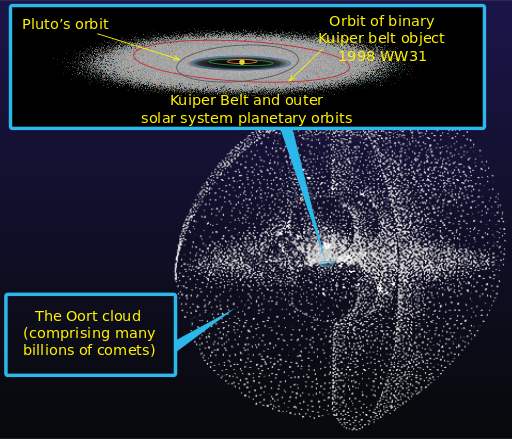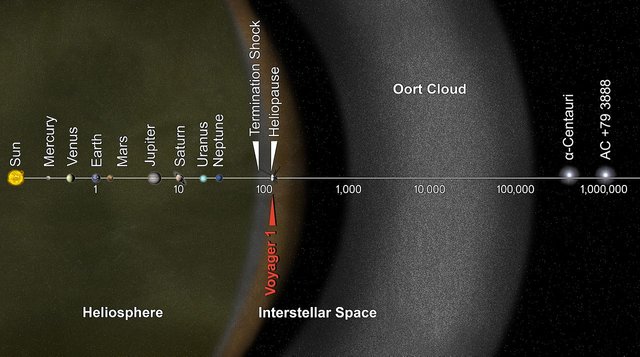The Oort Cloud

Image source: [1] this picture shows the distance from the Oort cloud to the rest of the Solar System and two of the stars measured in astronomical units.
The Oort Cloud receives its particular name from the astrophysicist Jan Hendrik Oort who was its discoverer. It is a huge region in the form of toroid full of icy objects that surrounds the sun and extends as far as the influence of this ceases to be important, ie up to a distance of 1 to 2 light years, a quarter of the way to La Star closest to the Sun, Proxima Centauri.

Image source: [2]
These objects can not be directly observed, only if they are attracted to the Sun and become comets. This immense area of space is populated by "billions" of icy objects being the main source of comets. Objects in the Oort cloud are called OCOs.
How many kites are lodged in the Oort cloud?
The figure depends on how often comets in the cloud escape into interplanetary space. According to the observed number of long-period comets, astronomers now estimate that it contains six billion kites; Are, therefore, the bodies of some more abundant size of the solar system. Only one-sixth belongs to the external and dynamic cloud described by Oort; The rest are in the core, denser.
History
The orbits of comets show a wide range of sizes, inclinations and eccentricities. In the past, comets were divided into two groups based on their orbital period: long-period comets with periods of more than 200 years, and short-period comets with lower times.
Long-period comets have two remarkable features. The first is that their orbits are mostly concentrated in very large sizes. The second is that its irruption in the region of the planets is isotropic, that is, there is no preferential direction. In addition, 50% of the long-period comets are retrograde, which is consistent with their random distribution.
More details here: Oort Cloud

I love this stuff. The Ort Cloud is the furthest influence of the Sun's gravitational pull on objects. I have read that we are currently "in phase" with the Ort Cloud. The last time we were "in phase" with the Ort Cloud? When the earth was hit in the Gulf of Mexico by an object that led to the death of the dinosaurs and the vast majority of other life on earth.
really interesting thanks for sharing
:)